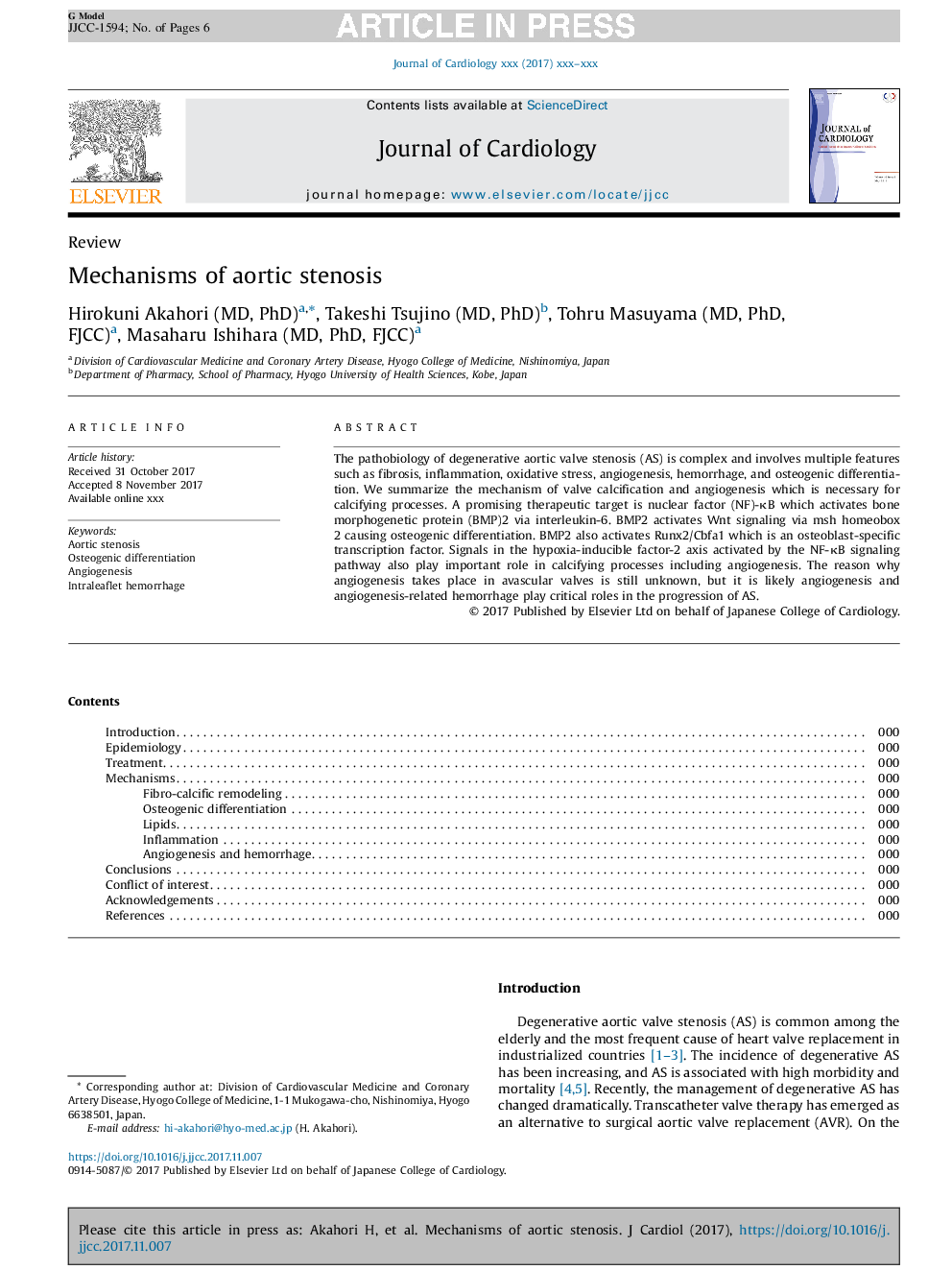| Article ID | Journal | Published Year | Pages | File Type |
|---|---|---|---|---|
| 8667913 | Journal of Cardiology | 2018 | 6 Pages |
Abstract
The pathobiology of degenerative aortic valve stenosis (AS) is complex and involves multiple features such as fibrosis, inflammation, oxidative stress, angiogenesis, hemorrhage, and osteogenic differentiation. We summarize the mechanism of valve calcification and angiogenesis which is necessary for calcifying processes. A promising therapeutic target is nuclear factor (NF)-κB which activates bone morphogenetic protein (BMP)2 via interleukin-6. BMP2 activates Wnt signaling via msh homeobox 2 causing osteogenic differentiation. BMP2 also activates Runx2/Cbfa1 which is an osteoblast-specific transcription factor. Signals in the hypoxia-inducible factor-2 axis activated by the NF-κB signaling pathway also play important role in calcifying processes including angiogenesis. The reason why angiogenesis takes place in avascular valves is still unknown, but it is likely angiogenesis and angiogenesis-related hemorrhage play critical roles in the progression of AS.
Related Topics
Health Sciences
Medicine and Dentistry
Cardiology and Cardiovascular Medicine
Authors
Hirokuni MD, PhD, Takeshi MD, PhD, Tohru MD, PhD, FJCC, Masaharu MD, PhD, FJCC,
